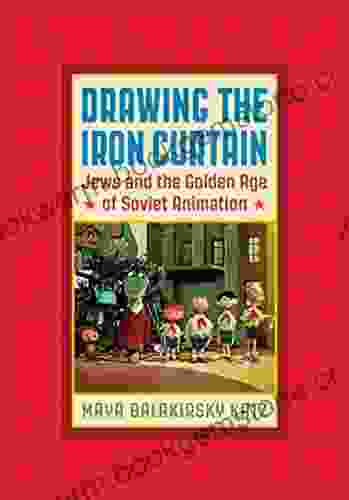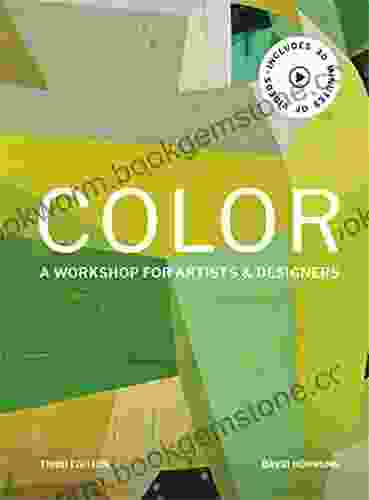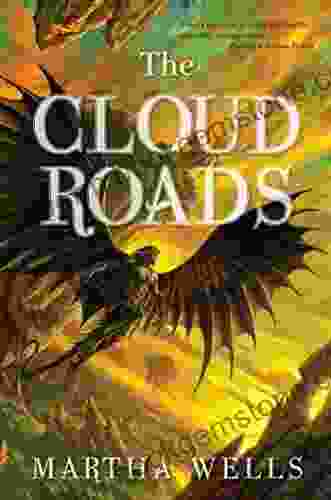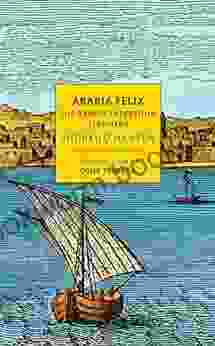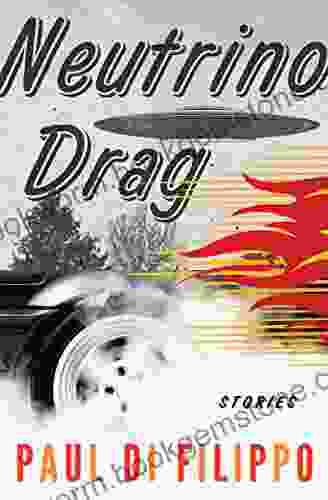Drawing the Iron Curtain: The Division of Europe after World War II

5 out of 5
| Language | : | English |
| File size | : | 18491 KB |
| Text-to-Speech | : | Enabled |
| Screen Reader | : | Supported |
| Enhanced typesetting | : | Enabled |
| Print length | : | 302 pages |
The Iron Curtain was a physical and ideological barrier that divided Europe after World War II. It was created by the Soviet Union to keep its satellite states under its control and to prevent the spread of Western ideas and influence. The Iron Curtain had a profound impact on the lives of millions of people, and its legacy can still be seen today.
The Origins of the Iron Curtain
The origins of the Iron Curtain can be traced back to the end of World War II. In the aftermath of the war, the Soviet Union emerged as one of the two superpowers. The Soviet Union was determined to expand its sphere of influence in Eastern Europe, and it quickly established satellite states in Poland, Hungary, Czechoslovakia, Romania, and Bulgaria. The United States and its Western allies were concerned about the Soviet Union's expansionism, and they began to take steps to contain it.
In 1947, the United States announced the Truman Doctrine, which pledged American support for free peoples who were resisting communist aggression. The Truman Doctrine led to the creation of the Marshall Plan, which provided economic aid to Western Europe. The Marshall Plan helped to rebuild the economies of Western Europe and to strengthen their resistance to communism.
The Soviet Union responded to the Truman Doctrine and the Marshall Plan by creating the Cominform, a Communist organization that was designed to coordinate the activities of communist parties in Eastern Europe. The Cominform was used to purge non-communist elements from the governments of Eastern Europe and to strengthen the Soviet Union's control over the region.
The Berlin Wall
The most visible symbol of the Iron Curtain was the Berlin Wall. The Berlin Wall was built in 1961 to prevent East Germans from fleeing to West Germany. The Berlin Wall was a concrete barrier that was over 100 miles long. It was guarded by armed guards who were authorized to shoot anyone who tried to cross it.
The Berlin Wall became a symbol of the division of Europe. It was a reminder of the Soviet Union's determination to keep its satellite states under its control and to prevent the spread of Western ideas and influence.
The Fall of the Iron Curtain
The Iron Curtain began to crumble in the late 1980s. In 1989, the Soviet Union's leader, Mikhail Gorbachev, introduced a series of reforms that allowed for greater freedom and openness in Eastern Europe. These reforms led to the collapse of communist governments in Poland, Hungary, Czechoslovakia, and East Germany.
The fall of the Berlin Wall on November 9, 1989, was a watershed moment in the history of Europe. It marked the end of the Iron Curtain and the beginning of a new era of freedom and democracy in Eastern Europe.
The Legacy of the Iron Curtain
The Iron Curtain had a profound impact on the lives of millions of people. It divided families and friends, and it prevented people from traveling freely. The Iron Curtain also had a negative impact on the economies of Eastern Europe. The centrally planned economies of Eastern Europe were inefficient and stagnant, and they could not keep up with the more dynamic economies of Western Europe.
The legacy of the Iron Curtain can still be seen today. The countries of Eastern Europe are still struggling to overcome the economic and social problems that were caused by communism. However, the people of Eastern Europe are now free to choose their own governments and to determine their own destinies.
The Iron Curtain was a dark chapter in the history of Europe. It divided families and friends, and it prevented people from traveling freely. However, the fall of the Iron Curtain in 1989 marked the beginning of a new era of freedom and democracy in Eastern Europe. The legacy of the Iron Curtain is still being felt today, but the people of Eastern Europe are now free to choose their own governments and to determine their own destinies.
5 out of 5
| Language | : | English |
| File size | : | 18491 KB |
| Text-to-Speech | : | Enabled |
| Screen Reader | : | Supported |
| Enhanced typesetting | : | Enabled |
| Print length | : | 302 pages |
Do you want to contribute by writing guest posts on this blog?
Please contact us and send us a resume of previous articles that you have written.
 Best Book
Best Book Page Flip
Page Flip Bookshelf
Bookshelf Literary loom
Literary loom Chapter
Chapter Bookish
Bookish PageTurner
PageTurner Bibliophile
Bibliophile Story
Story Inkwell
Inkwell Bookworm
Bookworm Labyrinth
Labyrinth Plot Twist
Plot Twist Prose
Prose Paperback
Paperback Storyteller
Storyteller Sanctuary
Sanctuary Fiction
Fiction Reading
Reading Chronicle
Chronicle Read
Read Lester Meachem
Lester Meachem John Graves
John Graves Ian St Martin
Ian St Martin John Samuel Barnett
John Samuel Barnett Darren Arnold
Darren Arnold Daniel Arenson
Daniel Arenson Darryl Anka
Darryl Anka Dawn G Marsh
Dawn G Marsh Franziska Thomas
Franziska Thomas Michael J Sullivan
Michael J Sullivan Keith Laumer
Keith Laumer David Beers
David Beers Madelynn Dickerson
Madelynn Dickerson Dean Movshovitz
Dean Movshovitz Judy Batalion
Judy Batalion Jack Vance
Jack Vance David Schwartz
David Schwartz Tanisha Stewart
Tanisha Stewart Elizabeth F Heath
Elizabeth F Heath Howard Fast
Howard Fast Jenifer Lewis
Jenifer Lewis David Ellsworth
David Ellsworth Robert Jordan
Robert Jordan Denise J Howard
Denise J Howard Dominique Mondesir
Dominique Mondesir Posey Parks
Posey Parks Nicole R Fleetwood
Nicole R Fleetwood Nancy Uno
Nancy Uno Patrick Drazen
Patrick Drazen Jeffrey Scott
Jeffrey Scott Rich Cohen
Rich Cohen Jo Toye
Jo Toye Stella Suberman
Stella Suberman Stanley Vestal
Stanley Vestal Robert Sitton
Robert Sitton Trip Stevens
Trip Stevens Jack Reid
Jack Reid Graham Hutchins
Graham Hutchins Elizabeth M Bonker
Elizabeth M Bonker Stu Glauberman
Stu Glauberman Ray Bradbury
Ray Bradbury Jiedson Domigpe
Jiedson Domigpe Jan De Volder
Jan De Volder Laura Rascaroli
Laura Rascaroli Ernest Shackleton
Ernest Shackleton Steve Russell
Steve Russell Gavin Larsen
Gavin Larsen Jahquel J
Jahquel J Simon Callow
Simon Callow Marion Mcnealy
Marion Mcnealy Richard Kurin
Richard Kurin Dawn Emerson
Dawn Emerson Helen Birch
Helen Birch Daniel Schinhofen
Daniel Schinhofen Marilyn Monroe
Marilyn Monroe Sue Roe
Sue Roe Wesley Chu
Wesley Chu Mary Stewart
Mary Stewart Ignacio J Esteban
Ignacio J Esteban David Britland
David Britland Frederick Law Olmsted
Frederick Law Olmsted Deborah Tannen
Deborah Tannen Dave Rearwin
Dave Rearwin Edward Butts
Edward Butts Keitra Crooks
Keitra Crooks Kyle West
Kyle West Vanda Jackson
Vanda Jackson Steven Watts
Steven Watts Diane Alber
Diane Alber David Canford
David Canford K B Wagers
K B Wagers Danyel Smith
Danyel Smith David Menconi
David Menconi Jim Krause
Jim Krause Loretta Lynn
Loretta Lynn David B Levy
David B Levy Nathan Van Coops
Nathan Van Coops Veronica Toumanova
Veronica Toumanova James Naremore
James Naremore Edmond De Goncourt
Edmond De Goncourt J T R Brown
J T R Brown Karena Dawn
Karena Dawn Euromentravel Com
Euromentravel Com Tania Romanov
Tania Romanov Lisa Smith
Lisa Smith Gail Anderson
Gail Anderson Juliet Defore
Juliet Defore Dervla Murphy
Dervla Murphy David Tracey
David Tracey David Downie
David Downie Tim Leong
Tim Leong Michael Robertson
Michael Robertson Edward Brody
Edward Brody Wassily Kandinsky
Wassily Kandinsky David Thomas
David Thomas Tom Clancy
Tom Clancy Robert Arp
Robert Arp Susanna Moodie
Susanna Moodie Stuart Macdonald
Stuart Macdonald Rose Marie Beebe
Rose Marie Beebe Thomas Nast
Thomas Nast Nanchu
Nanchu G J Ogden
G J Ogden Gretel Ehrlich
Gretel Ehrlich Ira Heinichen
Ira Heinichen Michael Schumacher
Michael Schumacher Paul Bonnet
Paul Bonnet Jeffrey Tayler
Jeffrey Tayler Lisa Allen Agostini
Lisa Allen Agostini Karl F Cohen
Karl F Cohen Martha Wells
Martha Wells Pete Hamill
Pete Hamill Jennifer Dasal
Jennifer Dasal Tim Clissold
Tim Clissold Jeffrey Round
Jeffrey Round Lisa Congdon
Lisa Congdon Roderick Beaton
Roderick Beaton Wilson Bickford
Wilson Bickford Peter Millar
Peter Millar Daniel Bellon
Daniel Bellon Debra Bricker Balken
Debra Bricker Balken Rick Griffin
Rick Griffin David Coggins
David Coggins Fang Fang
Fang Fang David Leddick
David Leddick Lily King
Lily King Kenneth Brantingham
Kenneth Brantingham Regina Kanyu Wang
Regina Kanyu Wang Martha R Severens
Martha R Severens Bob Dow
Bob Dow Kim Cash Tate
Kim Cash Tate David Mack
David Mack Darren Naish
Darren Naish Wes Singletary
Wes Singletary Robert Appel
Robert Appel Jocelyn Nicole Johnson
Jocelyn Nicole Johnson Pam Flowers
Pam Flowers Mimi Matthews
Mimi Matthews Glenn Dixon
Glenn Dixon Dr Lew Deitch
Dr Lew Deitch Daniel Pennac
Daniel Pennac Stephanie Hemelryk Donald
Stephanie Hemelryk Donald David Hopkins
David Hopkins Thomas Sowell
Thomas Sowell Eric Knowles
Eric Knowles Daniel Dae Kim
Daniel Dae Kim Patrice Fitzgerald
Patrice Fitzgerald Lynnea Lee
Lynnea Lee Mark Mazower
Mark Mazower Misty Copeland
Misty Copeland David Riley
David Riley Paul Talbot Greaves
Paul Talbot Greaves Sasha Chapin
Sasha Chapin Stanley Lane Poole
Stanley Lane Poole Steve Hulett
Steve Hulett David Koenig
David Koenig Ryukyu Saito
Ryukyu Saito Joseph Abboud
Joseph Abboud Reese Ryan
Reese Ryan William Henry Jackson
William Henry Jackson Jennifer Julie Miller
Jennifer Julie Miller Darren Mooney
Darren Mooney James Mcbride
James Mcbride Kitty Pilgrim
Kitty Pilgrim David J Schmidt
David J Schmidt Darby Penney
Darby Penney Dean Dalton
Dean Dalton David Simpson
David Simpson Jim Harter
Jim Harter West Fraser
West Fraser Mark Arnold
Mark Arnold Henry K Miller
Henry K Miller David Gessner
David Gessner Thomas Pecore Weso
Thomas Pecore Weso Richard Antoine White
Richard Antoine White David Salle
David Salle Liz Marsham
Liz Marsham Graham Swift
Graham Swift David Hagberg
David Hagberg Josh Reynolds
Josh Reynolds Eneasz Brodski
Eneasz Brodski Tilar J Mazzeo
Tilar J Mazzeo Marra B Gad
Marra B Gad Peggy Guggenheim
Peggy Guggenheim Gayatri Gopinath
Gayatri Gopinath Gerald Clark
Gerald Clark Janet Mock
Janet Mock Lisa M Rose
Lisa M Rose Jim Butcher
Jim Butcher Victor Zugg
Victor Zugg Simon R Green
Simon R Green Linda J Tomko
Linda J Tomko William Dalrymple
William Dalrymple Laquette
Laquette Gulwali Passarlay
Gulwali Passarlay Mako
Mako George L Wybenga
George L Wybenga Nick Steverson
Nick Steverson Susan Stoker
Susan Stoker Spider Robinson
Spider Robinson David Petrie
David Petrie Nicole Kornher Stace
Nicole Kornher Stace Russ Roberts
Russ Roberts Eve Laplante
Eve Laplante Richard Wagamese
Richard Wagamese Pen Quiller
Pen Quiller Walt Browning
Walt Browning Tulku Urgyen Rinpoche
Tulku Urgyen Rinpoche Michal Ramsey Smith
Michal Ramsey Smith Cornelius C Kubler
Cornelius C Kubler Timothy Ellis
Timothy Ellis Jodi Bombardier
Jodi Bombardier Scott Ryan
Scott Ryan David W Cameron
David W Cameron Danika Stone
Danika Stone Robert L Wise
Robert L Wise Dzongsar Jamyang Khyentse
Dzongsar Jamyang Khyentse Debby Detering
Debby Detering Mary Strong
Mary Strong Paul Schrader
Paul Schrader Dean Koontz
Dean Koontz Peter Aleshire
Peter Aleshire Rosie Martin
Rosie Martin Gloria Anzaldua
Gloria Anzaldua K Alex Walker
K Alex Walker David Ritz
David Ritz Ray Oslow
Ray Oslow Bob Martin
Bob Martin Diane Chamberlain
Diane Chamberlain George Morton Jack
George Morton Jack Darren Waldron
Darren Waldron Roy Simmons
Roy Simmons Sarah Waters
Sarah Waters Ginny Dye
Ginny Dye Ilona Andrews
Ilona Andrews Morgan Jerkins
Morgan Jerkins Meghan March
Meghan March Ross Buzzell
Ross Buzzell Darwyn Cooke
Darwyn Cooke David A Goodman
David A Goodman David Tuffley
David Tuffley Stella Blum
Stella Blum Margaret Ranger
Margaret Ranger Mia Mckenzie
Mia Mckenzie Dave White
Dave White Eric Thomson
Eric Thomson Patty Brown
Patty Brown Laxuri Art
Laxuri Art Delphi Classics
Delphi Classics Rosario Marin
Rosario Marin Stephen Arseneault
Stephen Arseneault Robert Rodriguez
Robert Rodriguez Liron Yanconsky
Liron Yanconsky E Lucas Bridges
E Lucas Bridges Heidi W Durrow
Heidi W Durrow Judith Kerr
Judith Kerr Rafael Ocasio
Rafael Ocasio David Stevens
David Stevens David A Badillo
David A Badillo G S Jennsen
G S Jennsen Emilio Estefan
Emilio Estefan E M Hardy
E M Hardy David Codamo
David Codamo Jeffrey Weiss
Jeffrey Weiss Ivan Margolius
Ivan Margolius Thorkild Hansen
Thorkild Hansen Mark Willenbrink
Mark Willenbrink Harry Bernstein
Harry Bernstein William Morris
William Morris Marie Rochelle
Marie Rochelle Preston Grassmann
Preston Grassmann David Weber
David Weber Marisa Handler
Marisa Handler Joy Spanabel Emery
Joy Spanabel Emery Tracey English
Tracey English David Hallberg
David Hallberg Frank Gado
Frank Gado Edward W Said
Edward W Said Rachel Mintz
Rachel Mintz Lara Dawson
Lara Dawson James Lee Burke
James Lee Burke Jesse Bryant Wilder
Jesse Bryant Wilder Danielle Allen
Danielle Allen Joy Deja King
Joy Deja King Jonathan Dehart
Jonathan Dehart Quanna Lashae
Quanna Lashae Denise Essex
Denise Essex Joni Eareckson Tada
Joni Eareckson Tada Greg Dragon
Greg Dragon David F Walker
David F Walker Brendan Keogh
Brendan Keogh Martin Turner
Martin Turner Liz Harper
Liz Harper Yossi Klein Halevi
Yossi Klein Halevi Ian Fleming
Ian Fleming Davey Johnson
Davey Johnson Jonathan Nicholas
Jonathan Nicholas Pete Wilton
Pete Wilton University Press
University Press Stefano Mancuso
Stefano Mancuso Dartagnan
Dartagnan Daria Gabryanczyk
Daria Gabryanczyk Thomas Booth
Thomas Booth Zoe Ingram
Zoe Ingram Bryan Bishop
Bryan Bishop Marcos Enrique Ruiz Rivero Ii Aviel
Marcos Enrique Ruiz Rivero Ii Aviel Jason Thomas
Jason Thomas Bill Gardner
Bill Gardner Tracy Clark
Tracy Clark David Byrne
David Byrne Virginia Matheson Hooker
Virginia Matheson Hooker David Brin
David Brin William Least Heat Moon
William Least Heat Moon Rob Mendez
Rob Mendez Jack Hartnell
Jack Hartnell M H Johnson
M H Johnson David Margolick
David Margolick J G Heck
J G Heck David Lundberg
David Lundberg Danny Peary
Danny Peary Tony White
Tony White William Feaver
William Feaver Daniel Hardie
Daniel Hardie Lina Rather
Lina Rather Jerzy Kosinski
Jerzy Kosinski J L Williams
J L Williams Shirley Ann Grau
Shirley Ann Grau Lewis Carroll
Lewis Carroll Daryl Lane
Daryl Lane Wanda Compres
Wanda Compres David Murphy
David Murphy Steve Roberts
Steve Roberts David Lebovitz
David Lebovitz David Conyers
David Conyers Darktechnomancer
Darktechnomancer P W Jordan
P W Jordan Joynell Schultz
Joynell Schultz Natascha Carrel
Natascha Carrel Gilda Williams
Gilda Williams Jody Eddy
Jody Eddy Frank Mccourt
Frank Mccourt Jonathan Fenby
Jonathan Fenby Raven Rivers
Raven Rivers Silas Munro
Silas Munro Rosemary Agonito
Rosemary Agonito Jemma Westbrook
Jemma Westbrook Susana Martinez Conde
Susana Martinez Conde David Bennun
David Bennun Daniel M Bensen
Daniel M Bensen Lee J Ames
Lee J Ames Don Keith
Don Keith Lucy Ryder Richardson
Lucy Ryder Richardson Kirill Klevanski
Kirill Klevanski Kembrew Mcleod
Kembrew Mcleod Robin Esrock
Robin Esrock Daniella Dechristopher
Daniella Dechristopher David Aston
David Aston Donald Hoffmann
Donald Hoffmann Robert Beer
Robert Beer Donna Everhart
Donna Everhart Nathan Johnson
Nathan Johnson Edwidge Danticat
Edwidge Danticat Roxie Mcclaine
Roxie Mcclaine Veronique Blanchard
Veronique Blanchard Dave Tucker
Dave Tucker Klaus Carl
Klaus Carl Christopher Panaretos
Christopher Panaretos Donna Tartt
Donna Tartt David Bellamy
David Bellamy David Deutschmann
David Deutschmann Stephen Coonts
Stephen Coonts Ron Wiggins
Ron Wiggins William J Conaway
William J Conaway Vivienne Cawson
Vivienne Cawson Carlos Francisco Jackson
Carlos Francisco Jackson Jean Daive
Jean Daive Elizabeth Gilpin
Elizabeth Gilpin Keith Mcdonald
Keith Mcdonald Delayed Gratification
Delayed Gratification Gary Greene
Gary Greene Gene Deitch
Gene Deitch David Hornung
David Hornung Crystal Allen
Crystal Allen Lolah Lace
Lolah Lace Danielle Martin
Danielle Martin David Horgan
David Horgan Trisha R Thomas
Trisha R Thomas Darius Hinks
Darius Hinks Kathy Arlyn Sokol
Kathy Arlyn Sokol Manohla Dargis
Manohla Dargis Sue Monk Kidd
Sue Monk Kidd James Cook
James Cook Janet Anderson
Janet Anderson Steve Erickson
Steve Erickson Mark Hillary
Mark Hillary Jerry Boyd
Jerry Boyd Sarah Jane Cervenak
Sarah Jane Cervenak Sylvia Plath
Sylvia Plath Thomas Kearney
Thomas Kearney Troy Anthony Platt
Troy Anthony Platt Daniel Ritchie
Daniel Ritchie Miles J Unger
Miles J Unger David Leite
David Leite Peter Lovatt
Peter Lovatt Emily Owen
Emily Owen David Plumbley
David Plumbley Deborah Feldman
Deborah Feldman David Kerr
David Kerr Mary Jane Jacob
Mary Jane Jacob Tullio Kezich
Tullio Kezich H Terrell Griffin
H Terrell Griffin Robert Barlas
Robert Barlas Sarfraz Manzoor
Sarfraz Manzoor Ryan Hendrickson
Ryan Hendrickson Kenneth Clark
Kenneth Clark Richard Brody
Richard Brody Virginia Melville Cowart
Virginia Melville Cowart Robert B Parker
Robert B Parker David Shimwell
David Shimwell John Mcmanus
John Mcmanus Norman F Cantor
Norman F Cantor David Railton
David Railton Sister Souljah
Sister Souljah Bob Leszczak
Bob Leszczak Jessica Swale
Jessica Swale Dorothy Dent
Dorothy Dent Shelley Hitz
Shelley Hitz Tj Reynolds
Tj Reynolds David James
David James Warren Berger
Warren Berger Glenn Kardy
Glenn Kardy Thor Hanson
Thor Hanson Gaston Dorren
Gaston Dorren Danny White
Danny White Darren Craig
Darren Craig David Blaine
David Blaine Rick Goldschmidt
Rick Goldschmidt Lauren Markham
Lauren Markham Mike Doyle
Mike Doyle David Long
David Long R P Jones
R P Jones Lynn Vincent
Lynn Vincent Tom Spector
Tom Spector Daniel Suarez
Daniel Suarez Lise Herzog
Lise Herzog Dawn C Crouch
Dawn C Crouch Iain Rob Wright
Iain Rob Wright Margot Mifflin
Margot Mifflin Michael Bamberger
Michael Bamberger Gustav Stickley
Gustav Stickley Marques Vickers
Marques Vickers Maryse Conde
Maryse Conde Lara Lee
Lara Lee J A Jance
J A Jance David Roberts
David Roberts Vicki Rozema
Vicki Rozema Moritz Fink
Moritz Fink Karen Traviss
Karen Traviss Daniel Gross
Daniel Gross Eric Lomax
Eric Lomax Janet Kagan
Janet Kagan Potter Style
Potter Style Bill Rumpel
Bill Rumpel Denise Bosler
Denise Bosler Jim Richards
Jim Richards Fredric Jameson
Fredric Jameson Henry Evans
Henry Evans Heather Alexander
Heather Alexander Julia Hsieh
Julia Hsieh Jacqueline Winspear
Jacqueline Winspear Kimberly Wilkes
Kimberly Wilkes Daniel Pierce
Daniel Pierce Kim Stanley Robinson
Kim Stanley Robinson Tim Hodkinson
Tim Hodkinson Gregory Allanther
Gregory Allanther Ludovic Castro
Ludovic Castro Deirdre Slattery
Deirdre Slattery Dave Watson
Dave Watson Ira Block
Ira Block David Baldacci
David Baldacci David Hoffer
David Hoffer Erin Morgenstern
Erin Morgenstern Tina Dreffin
Tina Dreffin Thi Bui
Thi Bui Daniel Black
Daniel Black Patrick Bixby
Patrick Bixby David Goudsward
David Goudsward Honey Phillips
Honey Phillips Ann Cleeves
Ann Cleeves Daniel Silva
Daniel Silva Nathan Hystad
Nathan Hystad Jayne Castle
Jayne Castle James Ellroy
James Ellroy George Catlin
George Catlin Denise Bossarte
Denise Bossarte Sonia Choquette
Sonia Choquette The Expat Homes Team
The Expat Homes Team Denise Kahn
Denise Kahn Lewis F Day
Lewis F Day Enrique Zaldivar
Enrique Zaldivar Vanessa Miller
Vanessa Miller Dru Pagliassotti
Dru Pagliassotti David Hughes
David Hughes Daniel Gibbs
Daniel Gibbs Thorstein Veblen
Thorstein Veblen Orson Scott Card
Orson Scott Card S W Erdnase
S W Erdnase Daniel Ankele
Daniel Ankele Gayne C Young
Gayne C Young Scotto Moore
Scotto Moore Rosanna Ley
Rosanna Ley Deborah Solomon
Deborah Solomon Stephanie Pui Mun Law
Stephanie Pui Mun Law Mark Zupan
Mark Zupan Vivian Chong
Vivian Chong Robbie Robertson
Robbie Robertson Fx Holden
Fx Holden Dartanya A Williams Sr
Dartanya A Williams Sr Darrel Rees
Darrel Rees Tory Bilski
Tory Bilski Lillian Colon
Lillian Colon Robbie Sheerin
Robbie Sheerin David Greenberg
David Greenberg Lawrence Baldassaro
Lawrence Baldassaro Karen Kaufman Wilson
Karen Kaufman Wilson Naima Simone
Naima Simone Sia N Evans
Sia N Evans Ivan Doig
Ivan Doig Mark Mccrum
Mark Mccrum Katrien Van Der Schueren
Katrien Van Der Schueren Josh Karp
Josh Karp Mike Farris
Mike Farris Ruth Superhal
Ruth Superhal Ken Britz
Ken Britz Matt Brown
Matt Brown Wolfgang Ziegler
Wolfgang Ziegler E B Hudspeth
E B Hudspeth Hester Berry
Hester Berry Rick Stein
Rick Stein Jamer Hunt
Jamer Hunt Bill Richardson
Bill Richardson Melinda Buckwalter
Melinda Buckwalter Laura Kasinof
Laura Kasinof David Mura
David Mura R Neil Hewison
R Neil Hewison Mike Puma
Mike Puma Lawrence Hill
Lawrence Hill Lev Grossman
Lev Grossman John Rae
John Rae Larry Miller
Larry Miller Iesha Bree
Iesha Bree David Sherwin
David Sherwin Ruth Leaf
Ruth Leaf Erica A Davis
Erica A Davis Danielle Kroll
Danielle Kroll International Learning Academy
International Learning Academy Joseph M Mascia
Joseph M Mascia Kushanava Choudhury
Kushanava Choudhury Reni K Amayo
Reni K Amayo Leonard S Marcus
Leonard S Marcus William Alan Webb
William Alan Webb Diego Rica
Diego Rica Daniel Zaragoza
Daniel Zaragoza Terry Pratchett
Terry Pratchett Daniel Okrent
Daniel Okrent Maxine Hong Kingston
Maxine Hong Kingston David Langlieb
David Langlieb Peter Ackroyd
Peter Ackroyd Jim Downing
Jim Downing John Richardson
John Richardson V D Bucket
V D Bucket Mitch Weiss
Mitch Weiss Mary G Houston
Mary G Houston Drew Pritchard
Drew Pritchard Dawnn Karen
Dawnn Karen Jung Chang
Jung Chang Debrah Martin
Debrah Martin Niraj Gupta
Niraj Gupta Linda Leaming
Linda Leaming Rachel Howzell Hall
Rachel Howzell Hall
Light bulbAdvertise smarter! Our strategic ad space ensures maximum exposure. Reserve your spot today!
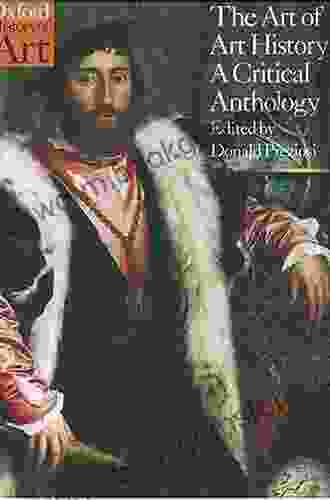
 Gabriel Garcia MarquezAfter Modern Art 1945-2024: A Journey Through Postmodernism and Beyond
Gabriel Garcia MarquezAfter Modern Art 1945-2024: A Journey Through Postmodernism and Beyond Hudson HayesFollow ·4.6k
Hudson HayesFollow ·4.6k Frank ButlerFollow ·12k
Frank ButlerFollow ·12k Ken SimmonsFollow ·9.1k
Ken SimmonsFollow ·9.1k Liam WardFollow ·2.6k
Liam WardFollow ·2.6k Aleksandr PushkinFollow ·16k
Aleksandr PushkinFollow ·16k Gene SimmonsFollow ·7.8k
Gene SimmonsFollow ·7.8k Ismael HayesFollow ·9.7k
Ismael HayesFollow ·9.7k Fabian MitchellFollow ·8.6k
Fabian MitchellFollow ·8.6k
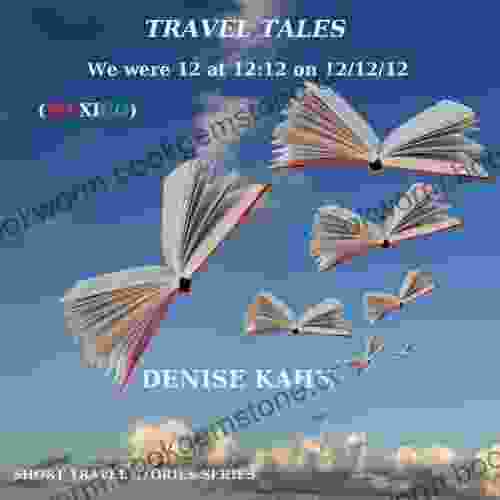
 Roland Hayes
Roland HayesWe Were 12 At 12:12 On 12/12/12: Adventure Travel Tales
On December 12, 2012, at...
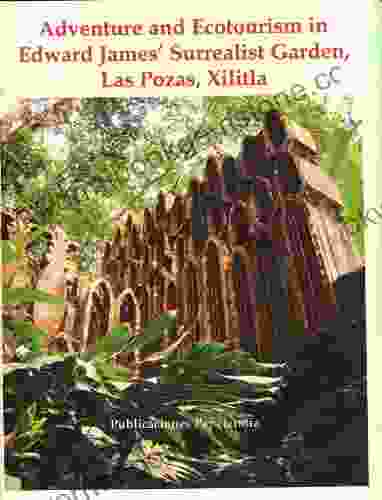
 Corey Green
Corey GreenUnveiling Adventure and Ecotourism in Edward James'...
Nestled amidst the lush...

 Douglas Foster
Douglas FosterBerkeley Artisan Food Markets: A Culinary Adventure in...
Nestled amidst...
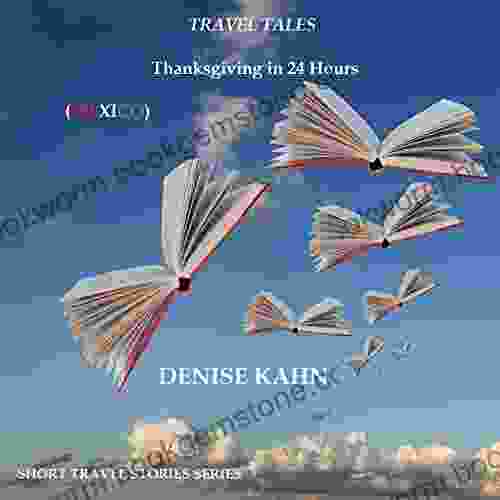
 Dan Henderson
Dan HendersonThanksgiving in 24 Hours: Travel Tales to Inspire Your...
Thanksgiving is a time for family, friends,...
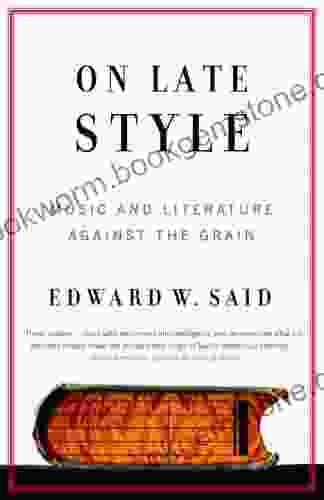
 Reginald Cox
Reginald CoxMusic and Literature Against the Grain: Exploring the...
: The Allure of...
5 out of 5
| Language | : | English |
| File size | : | 18491 KB |
| Text-to-Speech | : | Enabled |
| Screen Reader | : | Supported |
| Enhanced typesetting | : | Enabled |
| Print length | : | 302 pages |


